SILVANA MOSSANO
Reportage dell’udienza del 21 novembre 2022
Attenzione: chi, per età, è vissuto in case scaldate da stufe, a legna o a carbone o altro combustibile, corre un bel rischio. Perché la causa scatenante del mesotelioma potrebbe anche essere lì, in una vecchia stufa.
Pure questo è emerso al processo Eternit Bis, che si svolge davanti alla Corte d’Assise di Novara nei confronti dell’imprenditore svizzero Stephan Schmidheiny, accusato dell’omicidio doloso (con dolo eventuale) di 392 casalesi e monferrini, vittime del mesotelioma provocato dall’amianto.
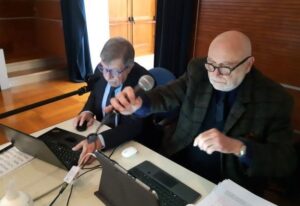
Lunedì 21 novembre, si è svolto il controesame dei consulenti della difesa Canzio Romano, esperto in Medicina del Lavoro (è stato professore associato all’Università di Torino), in Malattie dell’apparato respiratorio e in Igiene industriale, in Epidemiologia e Tossicologia (già direttore della Scuola di specializzazione all’Università di Torino), e Claudio Colosio, docente di Medicina del Lavoro al Dipartimento di Scienze della Salute dell’Università di Milano, con competenze specifiche nel campo della Tossicologia Occupazionale e studi sull’esposizione all’amianto, soprattutto nell’area asiatica dove l’amianto viene ancora impiegato.
Tra i 392 casi esaminati a uno a uno dai due esperti (e già analizzati anche dall’anatomopatologo Massimo Roncalli, sempre incaricato dalla difesa), il pubblico ministero Mariagiovanna Compare ne ha attinti alcuni su cui chiedere chiarimenti. Ad esempio, quello di una donna che è vissuta in Monferrato, «in un paese del Sin». Va spiegato che la sigla «Sin» significa «Sito di interesse nazionale per problemi legati alla contaminazione ambientale». Casale Monferrato e 48 Comuni del Monferrato (più due nel Vercellese e uno nell’Astigiano) compongono un Sin. Secondo i consulenti Colosio e Romano il fatto stesso di abitare in un paese che rientra nel «Sin» va calcolato come possibile fonte di esposizione e contaminazione da amianto. Il professor Romano ha esplicitamente dichiarato: «Il “Sin” esiste perché è un territorio ampiamente inquinato dall’amianto».
CHE COS’E’ IL SIN DI CASALE MONFERRATO?
A questo proposito, l’avvocato Esther Gatti, che al processo tutela anche alcuni Comuni costituiti parte civile, è intervenuta per fare chiarezza: «L’area del Sin corrisponde geograficamente al territorio dell’ex Ussl 76, in cui il problema è stata la dismissione dello stabilimento Eternit». Il consulente ha insistito sul proprio convincimento: «Non solo perché c’era lo stabilimento!».
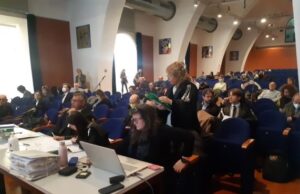
No? L’avvocato Gatti ha incalzato: «Il Sin nasce sulla base di un precedente “piano di area critica” individuato nel 1996, perché in quest’area c’era, appunto, uno stabilimento inquinato. Il Sin – ha specificato il legale – fa riferimento all’Eternit e al modo in cui è stato abbandonato. Ed è stato il prioritario l’intervento di bonifica che è stato effettuato». Basta leggere la premessa: «Nel Comune di Casale Monferrato aveva sede lo stabilimento Eternit, la cui presenza ed attività ha determinato una ingentissima diffusione di amianto sul territorio».
Torniamo alla stufa. Il pm Compare ha chiesto lumi ai consulenti: «Voi segnalate la stufa a legna come fonte di possibile esposizione. Su che base?». Ha risposto Colosio: «Qualunque oggetto che produceva calore era dotato di protezione di amianto». Nulla si sa, invero, sulle caratteristiche tecniche della stufa con cui si scaldavano nella casa dove, da bambina, abitava la signora che poi si è morta di mesotelioma, ma tanto basta alla difesa per aggiungere un ulteriore elemento di dubbio. Colosio attenua, però, la prima dichiarazione: «Nelle stufe, ma anche nei ferri da stiro era possibile che ci fosse amianto». Quindi è una ipotesi, suggerisce Compare. «Magari erano isolati bene…» sfuma il consulente.
Si intuisce che il pm fatica a credere che «la stufa abbia lo stesso peso dell’esposizione nel periodo di occupazione svolto all’Eternit»; i consulenti, tuttavia, ripetono con determinazione, che, pur ammettendo esposizioni alla fibra post 1976 (l’anno in cui l’imputato Schmidheiny assunse la guida dell’Eternit, ndr), «a oggi non si può escludere che quelle precedenti il 1976 siano state, dal nostro punto di vista, sufficienti a causare la malattia». La pm incalza: «Ma non siete comunque in grado di escludere l’incidenza delle esposizioni dopo il 1976». Replica netta di Romano: «Nessuno è in grado». E Colosio: «Noi medici ragioniamo su base probabilistica».
PIU’ FONTI DI CONTAMINAZIONE
I consulenti non escludono, ovviamente, come fonti di contaminazione di fibre lo stabilimento Eternit e, pur a fatica (e dimenticano talora di citarla), l’area ex Piemontese dove avveniva la frantumazione a cielo aperto di manufatti d’amianto guasti, per essere poi reimmessi nel ciclo produttivo. Tuttavia, ritengono che quelle contaminazioni avessero incidenza in un raggio di 700/800 metri. Danno per buoni e inconfutabili i dati riferiti da un altro consulente della difesa, Andrea D’Anna: stabilimento ed ex Piemontese erano fonte di emissioni pari a 630 miliardi di fibre all’ora; mentre le fonti presenti nel resto della città (cioè: tetti di edifici, coibentazioni con polverini e battuti nei cortili) emettevano 3566 miliardi di fibre all’ora. Fai il conto e viene fuori che il polo del Ronzone – stabilimento ed ex Piemontese, con attività a pieno ritmo – incideva, a parere dei consulenti della difesa, per il 15% del totale delle emissioni di fibre a Casale.
I TETTI SI SFALDANO SUBITO!
Sui tetti di «eternit» è emerso, nell’udienza di lunedì, un particolare inquietante. Lo ha riferito il professor Colosio. Queste le sue parole: «Il deterioramento delle coperture cominciava già dopo alcuni mesi dall’installazione».
Come, come, come? Si gela il sangue. Ma di che cosa stiamo parlando? E’ come dire che per anni, anzi per decenni, l’Eternit (e le altre fabbriche omologhe) ha prodotto manufatti che erano destinati a sfaldarsi e a diffondere fibre mortali pochi mesi dopo la loro installazione?
Con questa premessa, quei manufatti, appena realizzati, avrebbero dovuto essere sigillati e portati immediatamente in discarica, perché il loro utilizzo concreto, per il quale erano peraltro costruiti, era fonte, in brevissimo tempo… questione di mesi, dice Colosio…, di una diffusa contaminazione criminale. Alla faccia dell’eternità!
MA PERCHE’ SOLO LA MARTORIATA CASALE?
Il pubblico ministero Gianfranco Colace mica è convinto. Fa domande su domande perché i conti non tornano. Si rivolge al professor Romano: «Perché, per spiegare il caso Eternit, ha portato i dati della coorte di lavoratori della Sia (Società Italiana Amianto di Grugliasco), e non quelli della coorte di lavoratori Eternit di Casale? Ce l’abbiamo i dati della coorte dei lavoratori Eternit!». Romano ha detto semplicemente: «Mi erano utili i dati Sia per spiegare dei modelli»; cioè, a parere del consulente, il principale fattore di rischio per il mesotelioma è il periodo di latenza tra l’inizio dell’esposizione e la comparsa della malattia. Colace è perplesso. Va avanti: «Se io, però, ora le chiedo l’analisi della mortalità per mesotelioma per la coorte Eternit, che cosa mi sa dire sulla durata dell’esposizione e della latenza?». Il consulente: «Non so che cosa dire».
Però sia il professor Romano sia il professor Colosio rimangono fermi su un punto: il territorio era tutto contaminato; lo stabilimento era soltanto una delle fonti di esposizione. «Ma perché – eccola la domanda del pm che ci si fa in molti – perché a Casale, e a Broni, e a Bari, e nelle località dei cantieri navali, perché ci sono più morti che altrove? I tetti di “eternit” erano (e sono, ndr) ovunque. Eppure la mappa che indica la mortalità di amianto evidenzia concentrazioni ben superiori in determinate zone. Casale è una di queste». E ancora: «Perché, analizzando la situazione di Casale, i “cluster” più significativi sono attorno allo stabilimento, mentre man mano che ci si allontana, diminuisce l’incidenza delle malattie?».
A chiarimento, spieghiamo che il «cluster», in epidemiologia, rappresenta un gruppo di più casi della stessa patologia verificatisi in un determinato luogo e in uno specifico arco temporale.
Il pm insiste sulla domanda dei cluster; il consulente minimizza: «Secondo i suoi consulenti sì». «E secondo lei no?». Romano: «Non lo so». Colace persevera: «Se il rischio dipende molto dalla latenza e poco dall’esposizione cumulativa, perché i mesoteliomi si concentrano in determinate zone? Le mappe parlano chiaro, le concentrazioni sono ben evidenziate…». Il consulente replica di non aver «mai detto che la dose non sia rilevante», ma nega la dose cumulativa. Il pubblico ministero non demorde: «Professori, dai dati e dalle mappe in cui è raffigurata la distribuzione di casi di mesotelioma emerge che più si è esposti e più ci si ammala di mesotelioma». Il consulente Romano ribatte: «E’ più probabile» suscitando la reazione di Colace: «Come: probabile? Casale è un fatto certo, non probabile!».
Il pm cita e proietta formule, modelli, tabelle, studi scientifici. L’esame è incalzante, il consulente perde un po’ il filo. Alla fine ammette: «Sono un po’ stanco».
TEORIA MULTISTADIO
L’avvocato Laura Mara, uno dei legali di parte civile, porta all’attenzione una pubblicazione dell’Associazione italiana di Epidemiologia (Aie) sulla rivista scientifica «Epidemiologia e Prevenzione», avvenuta nel 2020. «Nelle conclusioni finali del documento viene o no confermata la teoria multistadio, ovvero che contano tutte le esposizioni, dalla prima all’ultima, certo con un peso maggiore delle prime, ma senza escludere l’efficacia anche di quelle successive?».
Il professor Romano, che conosce il lavoro, conviene che, sì, «viene detto questo. Però – aggiunge -, il fatto che quelle conclusioni non siano state smentite non vuol dire niente…». L’avvocato Mara insiste che «quella pubblicazione è stata firmata da diversi autorevoli scienziati italiani…». Romano sbotta: «Molti sono consulenti delle procure…». Il legale di parte civile reagisce, alzando il tono: «E’ un’insinuazione di basso profilo. A parte che, tra i firmatari, sono pochi quelli chiamati come consulenti dalle procure. In ogni caso, i consulenti delle procure – scandisce – sono pubblici ufficiali!».
Il presidente della Corte, Gianfranco Pezone, richiama alla calma. Il consulente della difesa corregge il tiro: «Non era un’insinuazione maliziosa, la mia, semplicemente… i consulenti vengono scelti dalle parti in base alle loro convinzioni… Non tutto è condiviso solo perché è pubblicato… Ci sono punti di vista diversi…». E comunque: «Non ho niente da spiegare».
L’avvocato Giacomo Mattalia, poi, chiede conto di un paziente, la cui diagnosi di mesotelioma è stata classificata dagli esperti della difesa solo come probabile e non certa: non escludono, infatti, che si sia trattato di una metastasi derivante da un carcinoma al colon. «Ci sono elementi precisi per affermare questo?» domanda il legale. Il professor Colosio risponde: «Mah, come dire, la medicina non è una scienza esatta, esistono delle variabilità… Comunque abbiamo detto che, in quel caso, il mesotelioma era probabile».
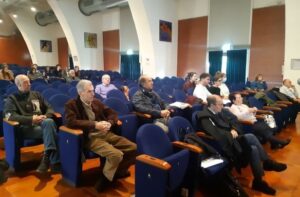
IL PROCESSO PROSEGUE
Delle tre udienze già calendarizzate entro fine anno ne resta in piedi una: quella del 12 dicembre. Cancellate quelle del 28 novembre e del 19 dicembre.
La Corte ha accolto alcune delle richieste avanzate dai pubblici ministeri par fare chiarezza su determinati aspetti che, a loro parere, sono rimasti in sospeso o confusi.
Pertanto, lunedì 12 dicembre, sarà ascoltato Rosarino Secreto: era stato dipendente della ditta casalese Bagna, incaricata dall’Eternit di effettuare lo smaltimento di rottami e rifiuti provenienti dallo stabilimento. Gli sarà chiesto di spiegare come e dove portava questi materiali di risulta.
Sarà anche ascoltato un esponente dell’Arpa, individuato dalla procura, in un confronto con un consulente della difesa e uno delle parti civili, in merito alle modalità della dispersione di amianto nell’aria derivante dalle diverse fonti, con relativi metodi di calcolo e misurazione.
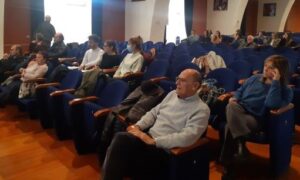
E’ stata inoltre fissata, per lunedì 16 gennaio, un’udienza per un confronto tra i consulenti della procura Corrado Magnani e Dario Mirabelli, un consulente delle parti civili ed esperti della difesa (Canzio Romano e Pierluigi Nicotera); dovranno esprimere le loro valutazioni su recenti studi che vertono sull’anticipazione della malattia e sul ruolo dell’esposizione cumulativa alla fibra oltre al carico polmonare di fibre e al cosiddetto «processo di clearance».
La Corte ha invece respinto la richiesta della procura di esaminare la dottoressa Federica Grosso, che dirige la Struttura Dipartimentale del Mesotelioma dell’Azienda ospedaliera di Alessandria e a cui fanno riferimento molti malati casalesi, in merito a diagnosi e sopravvivenza dei pazienti, alla luce delle nuove terapie. I pm ne avevano chiesto l’esame per chiarire dubbi sollevati dalle tesi difensive che tentano di spiegare la maggiore sopravvivenza di alcuni pazienti con il fatto che la malattia primaria fosse un altro tumore con relative metastasi alla pleura e non il mesotelioma.
Il presidente Pezone, però, ritiene che questi elementi potranno essere attinti e analizzati dalla Corte nella documentazione che è già stata consegnata dalle parti.
DISCUSSIONE
Dopo le udienze del 12 dicembre e del 16 gennaio, è prevedibile che, salvo imprevisti, sia dichiarata chiusa la fase dibattimentale e si apra la discussione con requisitoria dei pm, arringhe delle parti civili e delle difese. Poi la Corte d’Assise (il presidente Pezone, affiancato dal giudice togato Manuela Massino e dai sei popolari) si riunirà in camera di consiglio per decidere la sentenza.
Fare previsioni certe è sempre azzardato, tanto più che questo processo è molto delicato e complesso; potrebbe essere ragionevole attendere il verdetto attorno a Pasqua, a meno che i giudici abbiano necessità di tempi più lunghi per valutare la notevole mole di documentazione acquisita.
CORTE D’APPELLO PER IL «FILONE CAVAGNOLO»
E’ fissato per il 29 novembre il pronunciamento della Corte d’Appello di Torino che ha giudicato, in secondo grado, Stephan Schmidheiny in uno dei filoni in cui era stato spezzettato il procedimento Eternit Bis. In questo caso, il processo riguarda la morte di due persone di Cavagnolo (un ex lavoratore e una abitante del luogo). La procura generale ha chiesto la conferma della condanna inflitta in primo grado a 4 anni per omicidio colposo, con colpa cosciente; le difese hanno invocato l’assoluzione.
Translation by Victoria Franzinetti
Eternit Hearing November the 21st 2022
by Silvana MOSSANO
One might say beware: all those who, given their ages, have lived in houses heated by wood or coal or other fuel stoves, run a great risk. [For the defence] an old stove can be the trigger for mesothelioma. This idea emerged at the Eternit Bis trial held before the Novara Court of Assizes against Swiss businessman Stephan Schmidheiny, accused of the wilful murder (with possible malice) of 392 people from Casale and Monferrato, victims of mesothelioma caused by asbestos. On Monday November the 21st, cross of the defence experts Canzio Romano, Occupational Medicine associate professor at the University of Turin, specialist in Diseases of the Respiratory System and Industrial Hygiene, in Epidemiology and Toxicology (former director of the School of Specialisation at the University of Turin) and Claudio Colosio, Professor of Occupational Medicine at the Department of Health Sciences at the University of Milan, with specific expertise in Occupational Toxicology and studies on asbestos exposure, especially in the Asia where asbestos is still used was held.
PP Dr Mariagiovanna Compare selected some cases of the 392 cases examined by the two experts (and already analysed also by defence pathologist Massimo Roncalli, also commissioned, on which to ask for clarification. For example, that of a woman who lived in Monferrato, ‘in a SIN town’[1] Casale Monferrato and 48 municipalities in Monferrato (plus two in the Vercelli area and one in the Asti area). According to experts Dr Colosio and Dr Romano, the very fact of living in a town that falls within the ‘SIN’ should be calculated as a possible source of exposure and asbestos contamination. Professor Romano explicitly stated: ‘The ‘SIN’ exists because it is an area extensively polluted by asbestos’.
WHAT IS THE CASALE MONFERRATO SIN?
Lawyer Esther Gatti, representing some municipalities as plaintiffs, intervened to clarify: ‘The SIN area corresponds geographically to the former Health District Ussl 76, where the problem was the decommissioning of the Eternit plant’. The expert kept to their position: ‘Not only because the plant was there! Lawyer Gatti pressed on: ‘The area was listed as a SIN because in 1996 it had been identified as “a critical area “, given the presence of the plant. The SIN ‘refers to Eternit and the way it was abandoned: decontamination was carried out as a priority’ and I quote- she adds – ‘In the municipality of Casale Monferrato there was the Eternit factory, whose presence and activity determined a huge spread of asbestos in the territory’.
Back to the stove. Prosecutor Compare asked the experts for clarification: ‘You indicated the wood stove as a source of possible exposure. On what basis?”. Dr Colosio replied: ‘Any object that produced heat had asbestos protection. Nothing is known, indeed, about the technical features of the stove used to heat the house where the lady who later died of mesothelioma lived as a child, but this is enough for the defence to add a further element of doubt. Dr Colosio mitigates his previous statement: ‘There may have been asbestos in the stoves, but also in the house irons and boards. It is a hypothesis, the PP suggests. ‘Maybe they were well insulated…’ replied the expert. One senses that the prosecutor finds it hard to believe that ‘a stove has the same risk as the exposure during the period of employment at Eternit’; the experts however, repeat it with determination that, although they admit post-1976 exposures to the fibre (the year in which the defendant Schmidheiny took over Eternit, Note), ‘as of today we cannot exclude that those prior to 1976 were, from our point of view, sufficient to cause the disease’. The PP replied: ‘But you still cannot exclude the incidence of exposures after 1976’. Dr Romano’s sharp reply: ‘No one can. And Dr Colosio: ‘We doctors reason in terms of probability’.
MULTIPLE SOURCES OF CONTAMINATION
The experts do not, of course, rule the Eternit plant out as sources of fibre contamination and, albeit with difficulty (and they sometimes forget to mention it), the former Piemontese area where the open-air crushing of failed asbestos products took place, to be then reintroduced into the production cycle. However, they consider that contamination was limited to a radius of 700 to 800 metres. The data reported by another defence consultant, Andrea D’Anna are taken as good and irrefutable: the plant and the former Piemontese emitted 630 billion fibres per hour; while the sources in the rest of the city (i.e.: roofs of buildings, insulation with dust and courtyards) were emitting 3566 billion fibres per hour. Do the maths and it turns out that the Ronzone cluster – plant and former Piemontese, with full-scale operations – accounted for 15% of the total fibre emissions in Casale, according to the defence expert witnesses.
ROOFTOPS FLAKED IMMEDIATELY!
A disturbing detail emerged at Monday’s hearing on the ‘eternit’ (AC) roof coverings. This was reported by Professor Colosio. These are his words: ‘The deterioration of the roofs began a few months after installation’. How, how? But what are we talking about? Are they as saying that for years, indeed for decades, Eternit (and other similar factories) produced artefacts that flaked and spread deadly fibres a few months after their installation? Does it mean that as soon as they were made, the products should have been sealed and taken immediately to a landfill, because their use, for which they were built, was the source, in a very short time… a matter of months, says Prof Colosio…, of widespread criminal contamination. So much for eternity!
BUT WHY ONLY IN CASALE?
Prosecutor Gianfranco Colace is not convinced. He asks question after question because it doesn’t add up. He turns to Professor Romano: ‘Why did you bring the data of the cohort of workers from Sia (Società Italiana Amianto di Grugliasco) to explain the Eternit case, and not those of the cohort of Eternit workers from Casale? We have the data of the Eternit workers’ cohort!”. Prof Romano answered: ‘I needed the data from the Sia plant to explain models’; that is, in the defence expert’s opinion, the main risk factor for mesothelioma is the latency period between the beginning of exposure and the onset of the disease. PP Dr Colace is puzzled. ‘If I, however, now ask you for an analysis of mesothelioma mortality for the Eternit cohort, what can you tell me about the duration of exposure and latency?’ The consultant: ‘I don’t know’. Both Professor Romano and Professor Colosio remained firm on one point: the whole area was contaminated; the plant was only one of the sources of exposure. ‘But why – here’s the question many people are asking – why in Casale, and in Broni, and in Bari, and in the shipyards, why were there and are there more deaths than elsewhere? AC Eternit roofs were (and are) everywhere. Yet the map showing asbestos mortality shows much higher concentrations in certain areas. Casale is one of them’. And again: ‘Why is it that, analysing the situation in Casale, the most significant ‘clusters’ are around the plant, while as you move further away, the incidence of disease decreases? To clarify, we explain that a ‘cluster’, in epidemiology, represents a group of several cases of the same pathology occurring in a specific place and in a specific time frame. The Prosecutor insisted on the question of clusters; the experts play it down: ‘According to your expert witnesses, it is so’. “And not according to you?” Prof Romano: ‘I don’t know’. PP Colace insisted: ‘If the risk depends mostly on latency and little on cumulative exposure, why are mesotheliomas concentrated in certain areas? The maps speak clearly, the concentrations are well highlighted…’. The consultant replies that he has ‘never said that the dose is not relevant’ but denies the existence of a cumulative dose. The public prosecutor does not give up: ‘Professor, from the data and the maps showing the distribution of mesothelioma cases, it emerges that the more you are exposed, the more you get mesothelioma. Expert defence witness Prof Romano retorts: ‘It’s more likely,’ provoking Colace’s reaction: ‘Likely? Casale is a certain fact, not probable!’. The prosecutor quotes and projects formulas, models, tables, scientific studies. The examination is pressing, the expert witness loses the thread. At the end he admits: ‘I am a bit tired’.
MULTISTAGE THEORY
Lawyer Laura Mara, one of the plaintiffs’ lawyers, draws attention to a publication by the Italian Association of Epidemiology (Aie) in the scientific journal ‘Epidemiology and Prevention’, which took place in 2020. “In the final conclusions of the document, is the multistage theory confirmed or not, i.e., that all exposures count, from the first to the last, certainly with a greater weight of the first ones, but without excluding the effectiveness of the subsequent ones too?”. Professor Romano, who is familiar with the work, agrees that, yes, ‘this is what was written. However,’ he adds, ‘the fact that those conclusions have not been disproved does not mean anything…’. Lawyer Mara insists that ‘that publication was signed by several authoritative Italian scientists…’. Prof Romano interjected: ‘Many are expert witnesses of the public prosecutor…’. The plaintiff’s lawyer reacted, raising the tone of her voice: ‘That is a nasty insinuation. A few of the signatories few have been called as expert witnesses by the prosecution. In any case, the PP’s experts,’ she points out, ‘are public officers in their role! The President of the Court, Gianfranco Pezone, called for order. The defence expert corrects himself: ‘Mine was not a malicious insinuation, simply… experts are chosen by the parties according to their beliefs … Not everything is shared just because it is published… There are different points of view…’. And anyway: ‘I have nothing to explain’. Lawyer Giacomo Mattalia, then, asked about a patient, whose diagnosis of mesothelioma was classified only as probable and not certain by the defence experts: in fact, they do not rule out that it was a metastasis resulting from colon cancer. “Are there any precise elements suggesting?” the lawyer asks. Professor Colosio replies: ‘Well, how can I put it, medicine is not an exact science, there are variations… However, we said that, in that case, mesothelioma was probable’.
THE TRIAL CONTINUES
Only one of the three hearings already scheduled till the end of the year remains: December the 12th. Those of November the 28th and December the 19th were cancelled. The Court accepted some of the requests made by the prosecutors to clarify aspects that, in their opinion, had been left open or confused. Therefore, on Monday 12 December, Rosarino Secreto will be heard: he was employed by the Casale company Bagna, contracted by Eternit to dispose of scrap and waste from the plant. He will be asked to explain how and where he took these waste materials. An Arpa (Regional Health, Safety, and Environment Agency) representative, identified by the public prosecutor’s office, will also be heard, in a discussion with a defence expert and one of the civil parties, on how asbestos was dispersed in the air from the various sources, with calculation and measurement methods. A hearing has also been set for Monday January the 16th for a confrontation between the prosecution’s expert witnesses Prof Corrado Magnani and Dr Dario Mirabelli, a plaintiff’s expert and experts from the defence (Professors Canzio Romano and Pierluigi Nicotera); they will have to express their evaluations on recent studies on the anticipation of the disease and the role of cumulative exposure to the fibre in addition to the lung load of fibres and the so-called ‘clearance ‘. The Court rejected the Prosecution’s request to examine Dr. Federica Grosso, who heads the Department of Mesothelioma of the Alessandria Hospital and to whom many Casale patients are referred to, on the diagnosis and survival of patients, with the new therapies. Prosecutors had asked for her to be heard to clarify doubts raised by the defence’s arguments, which attempted to explain the increased survival of some patients by the fact that the primary disease was another tumour with related metastases to the pleura and not mesothelioma. Chief Judge Pezone, however, believes that these elements can be drawn on and analysed by the Court in the documentation that has already been delivered by the parties.
DISCUSSION
After the hearings of 12 December and 16 January, unless there are unforeseen events, the debate will be closed, and the discussion will begin with the Prosecutor’s and the plaintiffs’ and defence’s closing speeches. Then the Assize Court (President Pezone, with judge Manuela Massino and the members of the Jury (Giudici popolari)) will meet in chamber to decide the verdict. Predictions are always risky, especially since this trial is very delicate and complex; it might be reasonable to expect the verdict around Easter, unless the judges need more time to assess the considerable amount of documentation.
COURT OF APPEAL FOR THE ‘CAVAGNOLO ‘ TRIAL
On November the 29th, the Turin Court of Appeal is scheduled to deliver its verdict on Stephan Schmidheiny in one of the Eternit Bis proceedings. In this case, the trial concerns the death of two people from Cavagnolo (a former worker and a local resident). The public prosecution requested for the confirmation of the verdict of the court of first instance (four years for manslaughter, with wilfulness; the defence for acquittal.
[1] The acronym SIN means ‘Site of national interest for environmental contamination problems’.

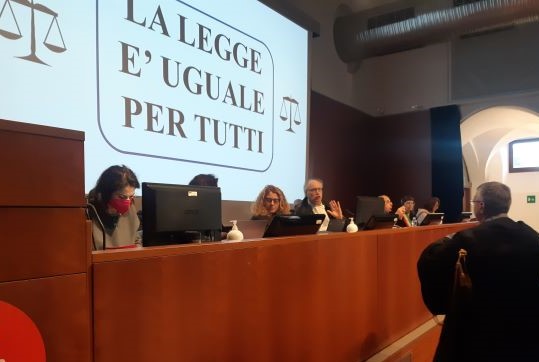

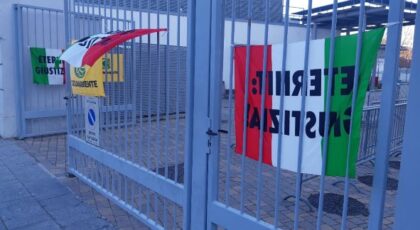
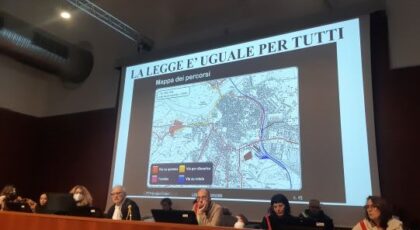
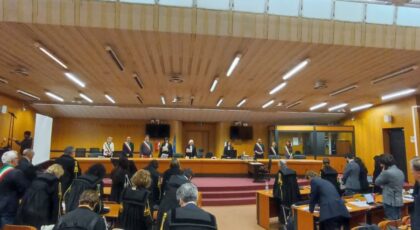
Grazie Silvana! Ottimo e molto prezioso (come sempre) il tuo lavoro! In effetti se le tesi della difesa, dei loro grandi prof, avessero davvero fondamento in Italia dovremmo avere milioni e milioni di mesotelioma…… non causati dalle attività produttive, naturalmente!
Praticamente parte della nostra gioventù “ aggrediti” dall’eternit senza saperlo. Chi è stato più fortunato è ancora tra noi. Mentre tanti troppi non sono più tra noi. Attendiamo fiduciosi il corso della giustizia.?!?!Grazie Silvana
Ancora una volta grazie per le dettagliate informazioni. La speranza è l’ultima a morire, ma troppi cavilli rendono tutto ancora incerto.